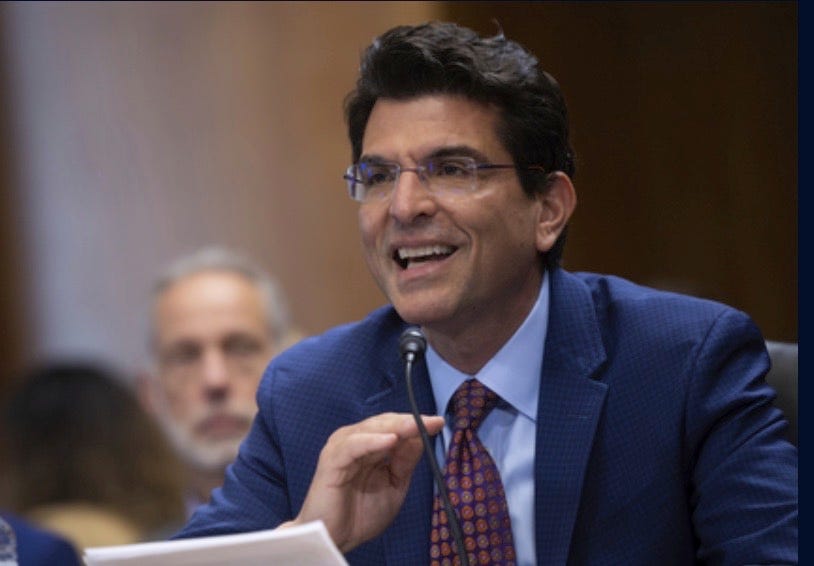Big Business At The (Inflation Reduction Act) Trough
The American Clean Power Association is lobbying to prevent repeal of the IRA. Why? Its members have collected more than $47 billion in public money & they want to keep the corporate welfare flowing.

The late economist Milton Friedman famously declared that “nothing is so permanent as a temporary government program.”
Friedman’s line comes to mind because a lobbying frenzy is underway in Washington, DC. Some of the city’s most powerful special interests are working to prevent a repeal or reduction of the lavish energy-related tax credits in the Inflation Reduction Act. No lobby group is working harder than the American Clean Power Association.
Why is the ACPA pushing so hard? The answer is simple: Its members have collected tens of billions of dollars in federal subsidies, loans, and loan guarantees over the past few years to install solar energy, wind energy, batteries, and other forms of alt-energy, and they don’t want that geyser of federal money to stop. As the Wall Street Journal noted in a recent editorial, “Republicans for the Green New Deal,” thanks to the IRA’s expansion of the investment tax credit (ITC) and production tax credit (PTC), solar and wind developers can “offset as much as 70% to 80% of their costs.” Given that giveaway, it’s no surprise that the ACPA and its members are spending millions of dollars to persuade Congress — and in particular, Republican members of the House of Representatives — to keep the corporate cash flowing.
According to Subsidy Tracker, an excellent database maintained by one of my favorite NGOs, Good Jobs First (annual revenue: $1.9 million), the companies now on ACPA’s board of directors have collected $47 billion in subsidies, loans, and loan guarantees. Most of that sum has been collected over the past decade or so. But that figure represents only a fraction of the public money that the group’s members have vacuumed up over the past few years. Furthermore, and perhaps most galling, is this: About a third of that $47 billion is going to foreign corporations, including companies like Iberdrola, Shell, and Equinor.
Why does this matter? First and foremost, the ITC and PTC are, to use the title of Meredith Angwin’s excellent 2020 book, shorting the grid. The massive subsidies for weather-dependent forms of generation are distorting electricity markets and contributing to the premature closure of the thermal plants needed to assure the affordability, reliability, and resilience of our electric grid.
Second, these subsidies are fueling the landscape-wrecking, bird-and-bat killing, property-value-destroying energy sprawl that comes with the expansion of Big Solar and Big Wind. They are also fueling the insane expansion of offshore wind energy into the known habitat of the critically endangered North Atlantic Right Whale and other marine mammals.
Third, ACPA’s annual revenue nearly doubled between 2021 and 2023 to $62.3 million. That growth is indicative of the power and influence of the NGO-corporate-industrial-climate complex in Washington and around the country. According to a 2023 internal ACPA board memo leaked to the media last year, the group is spending about $10 million per year to fund state-level front groups promoting solar and wind in rural areas.
Fourth, a full repeal of the IRA, or a significant reduction of the subsidies, is the first major legislative test for the Trump administration. If Energy Secretary Chris Wright and Interior Secretary Doug Burghum are going to be successful at securing our electric grid and avoiding the policy errors that are sabotaging electricity markets in Germany, Britain, Australia, and California, they have to attack the ITC and PTC.
Finally, unless they are repealed or reformed, the IRA subsidies will make the federal deficit worse. As I explained in these pages last April, the ITC and PTC are the most expensive energy-related preferences in the federal tax code. In addition, when Congress passed the IRA, we were told the energy-related tax credits would cost about $270 billion over a decade. However, a new report by the Cato Institute’s Travis Fisher and Joshua Loucks shows that the ITC and PTC are “functionally unlimited” and could cost the federal treasury over $3 trillion by 2050.
How to proceed? As always, it pays to follow the money.
Let’s do so by looking at key excerpts from that 2023 internal memo, as well as four charts that show how — and how much — the ACPA’s members are feeding at the federal trough.
Keep reading with a 7-day free trial
Subscribe to Robert Bryce to keep reading this post and get 7 days of free access to the full post archives.




